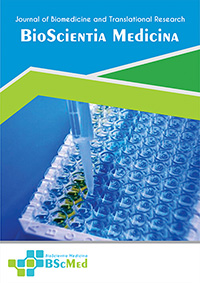Main Article Content
Abstract
Background: Refractory patch alopecia areata (AA) presents a significant therapeutic challenge, as many patients fail first-line treatments. This gap necessitates the exploration of novel, mechanistically-targeted therapeutic strategies.
Case presentation: We present the case of a 44-year-old female with a 2.5 × 3.0 cm patch of AA, refractory to a 3-month compliant trial of topical 0.25% desoximetasone and 5% minoxidil. Baseline diagnostics included histopathology (peribulbar lymphocytic infiltrate), quantitative trichoscopy (yellow dots, black dots, exclamation mark hairs), and laboratory workup, which revealed a serum 25-hydroxyvitamin D [25(OH)D] insufficiency (18.2 ng/mL). A multi-modal protocol was initiated: (1) systemic 5,000 IU/day oral cholecalciferol, (2) 10 sessions of 1.5 mm microneedling at two-week intervals, and (3) immediate post-procedure application of topical 100,000 IU cholecalciferol. Significant regrowth of pigmented terminal hairs was observed by week 12. After 20 weeks (10 sessions), complete clinical regrowth was achieved. Final quantitative trichoscopy confirmed the full resolution of all pathological markers, with a healthy density of terminal hairs. The patient’s systemic 25(OH)D level was corrected to 41.5 ng/mL. The treatment was well-tolerated.
Conclusion: This case report documents a complete remission associated with a multi-modal protocol. The contribution of the systemic vitamin D repletion is a major, unresolvable confounder, making attribution impossible. However, this hypothesis-generating case suggests a combined (systemic, physical, and topical) approach may represent a potential rescue strategy for refractory patch AA, warranting further controlled investigation.
Keywords
Article Details
As our aim is to disseminate original research article, hence the publishing right is a necessary one. The publishing right is needed in order to reach the agreement between the author and publisher. As the journal is fully open access, the authors will sign an exclusive license agreement.
The authors have the right to:
- Share their article in the same ways permitted to third parties under the relevant user license.
- Retain copyright, patent, trademark and other intellectual property rights including research data.
- Proper attribution and credit for the published work.
For the open access article, the publisher is granted to the following right.
- The non-exclusive right to publish the article and grant right to others.
- For the published article, the publisher applied for the Creative Commons Attribution-NonCommercial-ShareAlike 4.0 International License.





